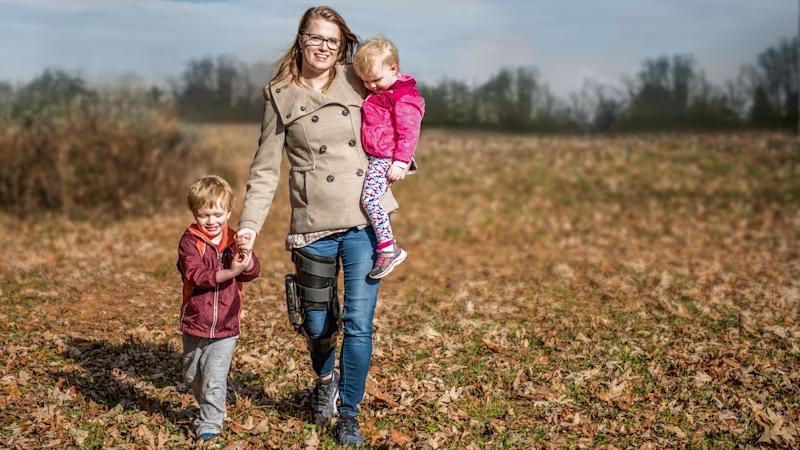Osteoporosis
La osteoporosis (pérdida ósea) es una enfermedad caracterizada por la disminución constante de la densidad de la masa ósea. El esqueleto se vuelve más inestable y poroso, y el riesgo de sufrir fracturas de huesos aumenta.
Osteoporosis: causes, symptoms and treatment
Osteoporosis (bone atrophy) is a syndrome defined by an ongoing and continuous decrease in bone mass. The skeleton becomes increasingly unstable and porous, and the risk of bone fractures is elevated. While osteoporosis affects the entire skeleton, certain areas may be more severely affected.
In older people, the bone mass decreases along with the frequent decrease in physical activity. With osteoporosis, the bone metabolism is disturbed so that this natural bone atrophy accelerates and an imbalance develops between bone formation and bone loss.
Ottobock supports and orthoses

Causes
Osteoporosis is caused by altered bone metabolism or insufficient, mechanical or muscular deformation of the bone materials. The muscular stimulus that deforms the bone via the tendons decreases with age. The speed of movement and performance also decline with age. A decrease of the muscle cross-section is therefore often observed at the measurement site as well when measuring the bone mass.
Secondary osteoporosis is caused by diseases that disturb the metabolism and/or the hormone balance. Other possible triggers are taking medications for long periods of time or excessive alcohol and nicotine consumption. Primary osteoporosis occurs without any discernible direct causes. Depending on the timing of its onset, it is called post-menopausal osteoporosis that occurs after the start of menopause or senile osteoporosis, which may occur starting at around 70 years of age.
Síntomas
Mientras la masa ósea solo se vea reducida ligeramente, la osteoporosis presenta únicamente síntomas leves. Sin embargo, con el tiempo se producen fracturas espontáneas, en especial en los cuerpos vertebrales. Las consecuencias de esto son dolores, una disminución de la estatura y otras alteraciones del aparato locomotor. Debido a la consiguiente menor actividad física, el rendimiento muscular y la coordinación se reducen de forma que ya esto puede conducir a caídas frecuentes.
Diagnosis
A detailed discussion of the patient’s medical history is followed by a physical examination with several tests of mobility, muscle strength, muscle performance, balance and coordination. Radiology procedures include at least a DXA/PQCT measurement and evaluation of the bone mass/bone density as well as the muscle cross-section where applicable. X-rays can provide information on existing fractures.
Therapy
Therapy depends on the cause and form of osteoporosis. It is initially designed to influence the bone metabolism in order to prevent fractures. Acute treatment is required for any fractures that have already occurred due to osteoporosis. This also means alleviating the pain associated with the fracture. Treatment for osteoporosis also aims to alleviate or eliminate any permanent pain or discomfort.
Without treatment, bone atrophy progresses so the bones become increasingly brittle. For this reason, it’s important to start osteoporosis therapy as soon as possible.
Orthoses can help stabilise and straighten the spine. They improve the body posture and activate the torso muscles.
Volver a la vida cotidiana: en 3 pasos hasta la órtesis de Ottobock
- Aquí encontrará un resumen de las órtesis y correajes que pueden ser adecuados para usted. Lleve consigo esta lista la próxima vez que acuda al médico.
- Consulte a su médico cuál de las órtesis es la más adecuada para su cuadro clínico. Seguidamente, su médico le extenderá una receta para la órtesis correspondiente.
- Acuda con la receta a una ortopedia. Allí recibirá su nueva órtesis después de haberse adaptado con precisión a sus medidas corporales.
